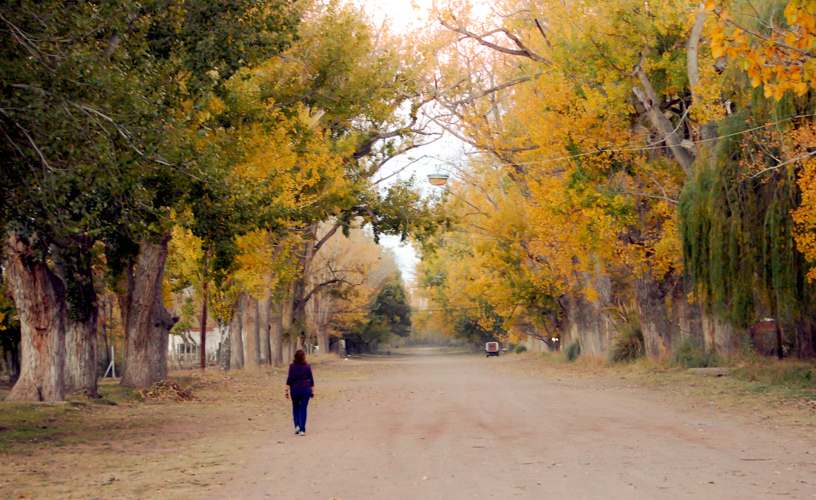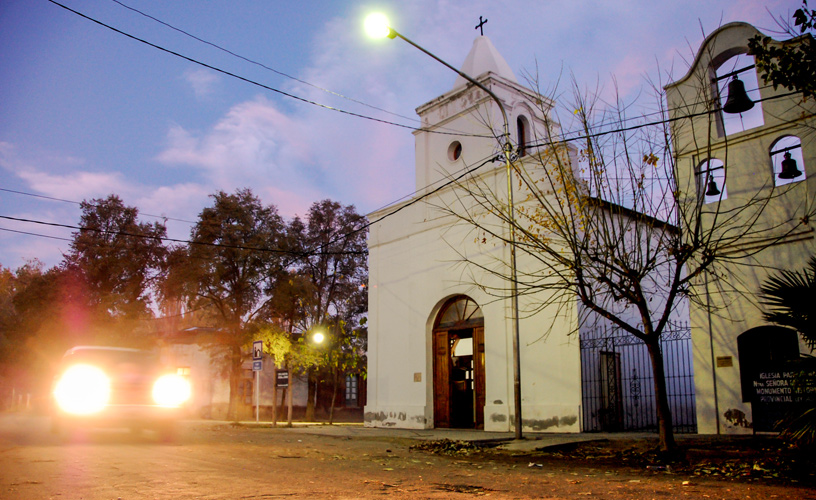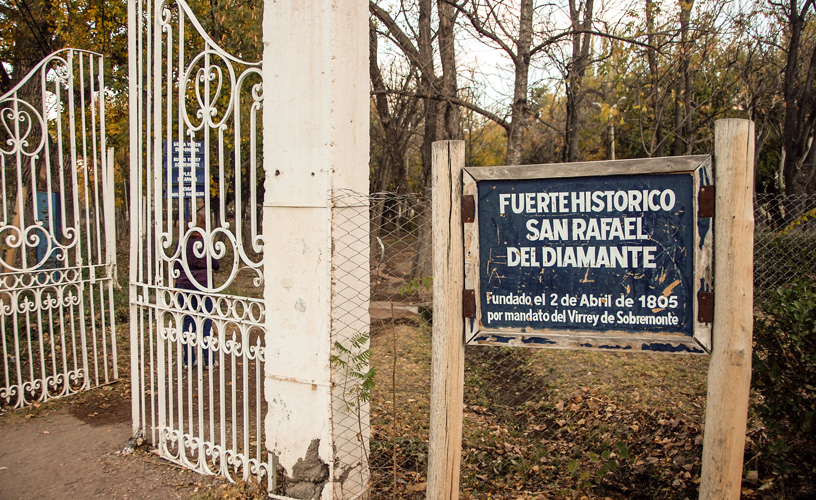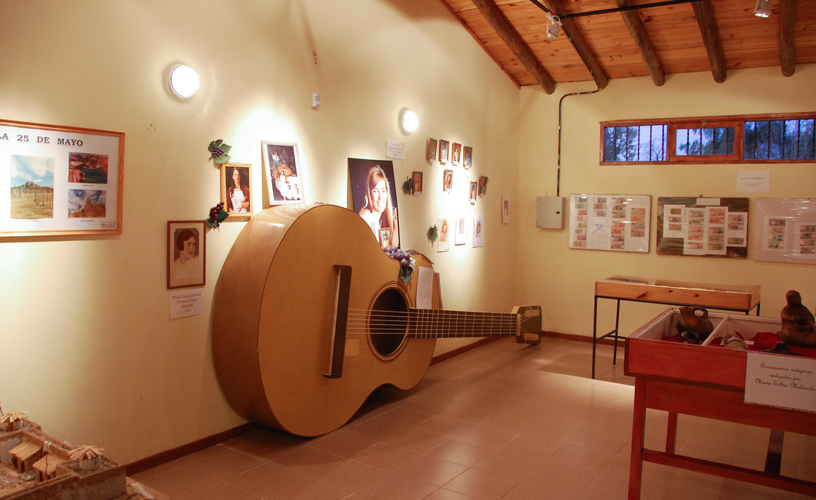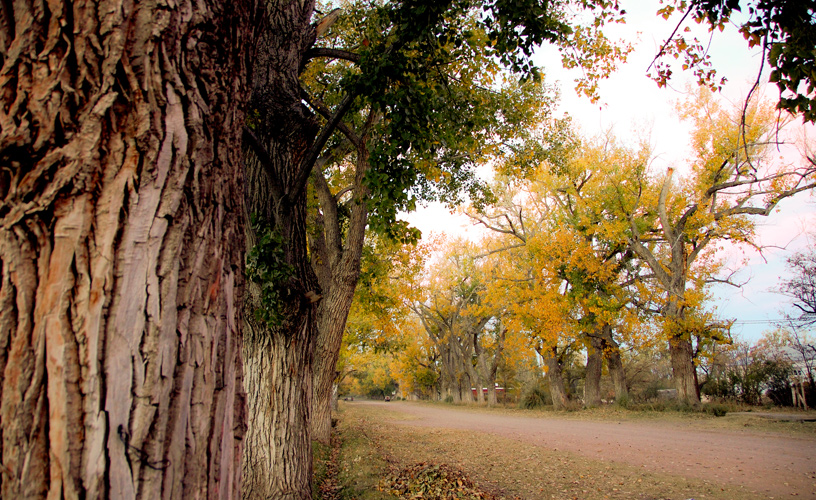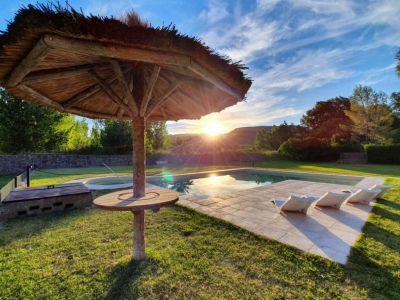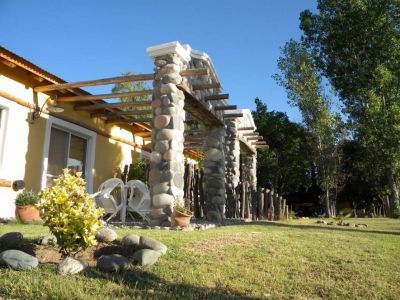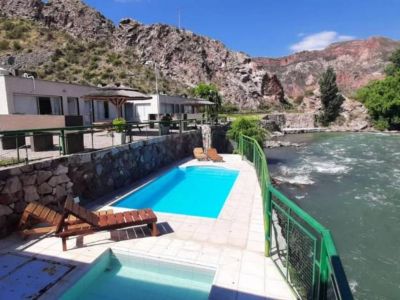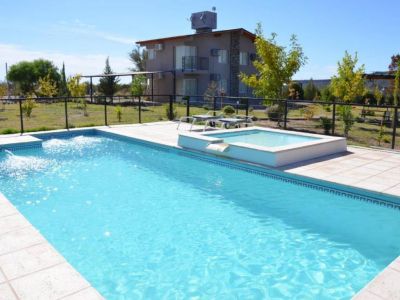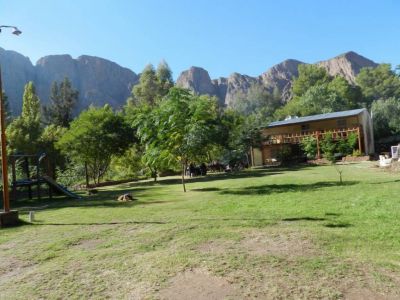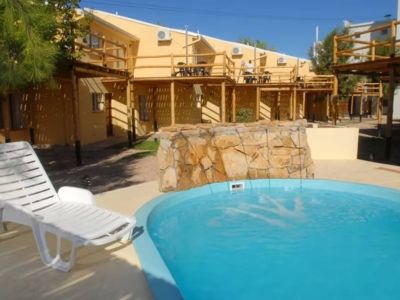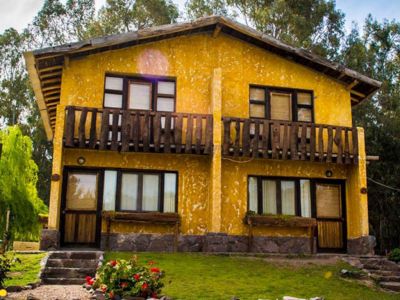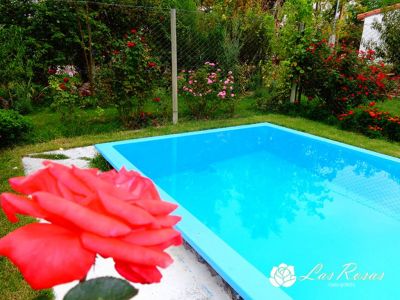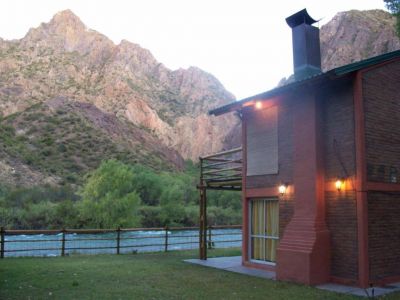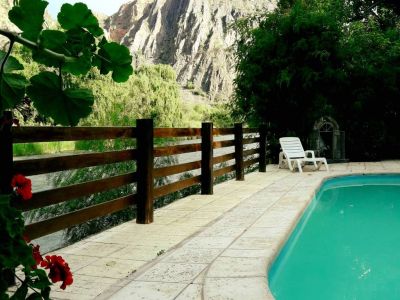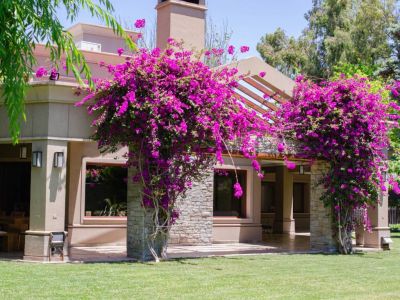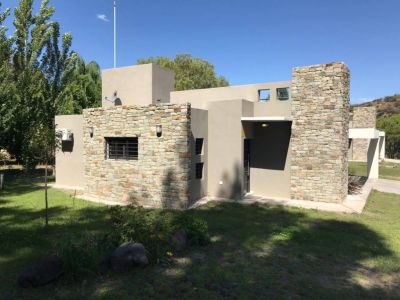On arriving at the village, we did not know much about it. But, after walking for a while along its dirt roads, low houses and lush surroundings, we started to feel a kind of special magic.
It was the museum of Villa 25 de Mayo that gave us the first idea of its origins. Those few countryside blocks briefly described the history of the City of San Rafael.
We walked through the remains of the fort, its old Catholic chapel and some adobe houses scattered here and there. Afterwards, we became aware that we needed many more details about the origins of this place.
It was interesting to listen to Enriqueta Zabala, in charge of the Municipal Tourist Office, who is in love with the city and was eager and excited to tell us all what she knew about this site. Proud of the past of this village, she was the door to this place.
Villa 25 de Mayo, with the Scent of the Past
“Villa 25 de Mayo is an icon of the foundation of the City of San Rafael. It was the first colonization and settlement of the area”, Enriqueta told us.
“Both sedentary tribes and settlers who were willing to stop the advance of hunting tribes lived together. There are still remains of the fort San Rafael del Diamante and its Plaza de Armas”.
This fort sheltered rooms for militia, stables and armory and a chapel in homage to Our Lady of Mount Carmel as well, which was moved from this place to its current location.
Yesterday is Present
The history of this people is closely related to significant historical events and their consequences, such as the short passing by the followers of General San Martín, who supported his military campaign in the fort.
The presence of the church of Our Lady of Mount Carmel deserved to be mentioned. With over one hundred years of life, this church has kept its original façade made up by white walls, a dome and a bell tower.
Its entrance door is original and defined by its colonial style. We got inside and admired the image of the Virgin, coming from Cadiz for its first location. Its small and simple interior roused a special feeling. Its ceilings are tall and supported by big pieces of timber. It is covered by canes one after the other, all of which show simplicity and create a cozy atmosphere year round.
The Franciscans and Carmelites have restored objects which belonged to the fort in older times and some of them are on display such as the harmonium.
The village has been the cradle of poets like Alfredo Bufano. This place inspired him to write songs about the landscape, singing waters from the ditches, the warbling of birds or the squealing of the trees under the sway of the wind.
Today, very near the city, this is a place visited by those who escape the hustle and bustle of big metropolis and devote themselves to art, writing or simply having a rest after a hard week in the City of San Rafael.
May History Not Fade Away
The annual national festivities such as May 25 and July 9 are famous. Popular events, guided tours and traditional dancing are present in this village and enjoyed by a great number of local people and tourists.
The national pericón dance is very popular. “More and more dancing couples are expected to come year after year and now there are already over one million of them who dance from the heart showing love for our traditions”, Enriqueta said.
This dance is a way of restoring human values, an eye contact between two people and a better relationship with your dancing partner.
Locro, arrope, home made wine and empanadas are the typical dishes served on those dates. Likewise, its current gastronomy enables visitors to enjoy delicious and classic dishes such as carne a la masa a sort of meat pie baked in a clay oven.
If you decide to visit the village, you should ask about painter Raúl Landete, who lives and has his own atelier here. Should you happen to go past the Cathedral of San Rafael, you will have been amazed at the huge wooden cross painted in oil in front of the central nave.
You should also ask about the first winery in Southern Mendoza, today La Abeja (“The Bee”), which is open to visitors.
Within the microclimate enjoyed in this region, the fall is highly praised due to the lemon yellowish and golden brown leaves falling down its old carolinos, an over-two-hundred–year-old tree species.
The town spreads a peculiar enchantment with a past still alive. Its adobe houses and customs are struggling to make sure “history definitively does not fade away”.
Mónica Pons
Eduardo Epifanio
Contact of the excursion or tour
Secretaría de Turismo de San Rafael
Av. H. Irigoyen 1530 y Balloffet, San Rafael, Mendoza, Agentina
Phone: +54 260-4424217
Cell phone: +54 260-223600
